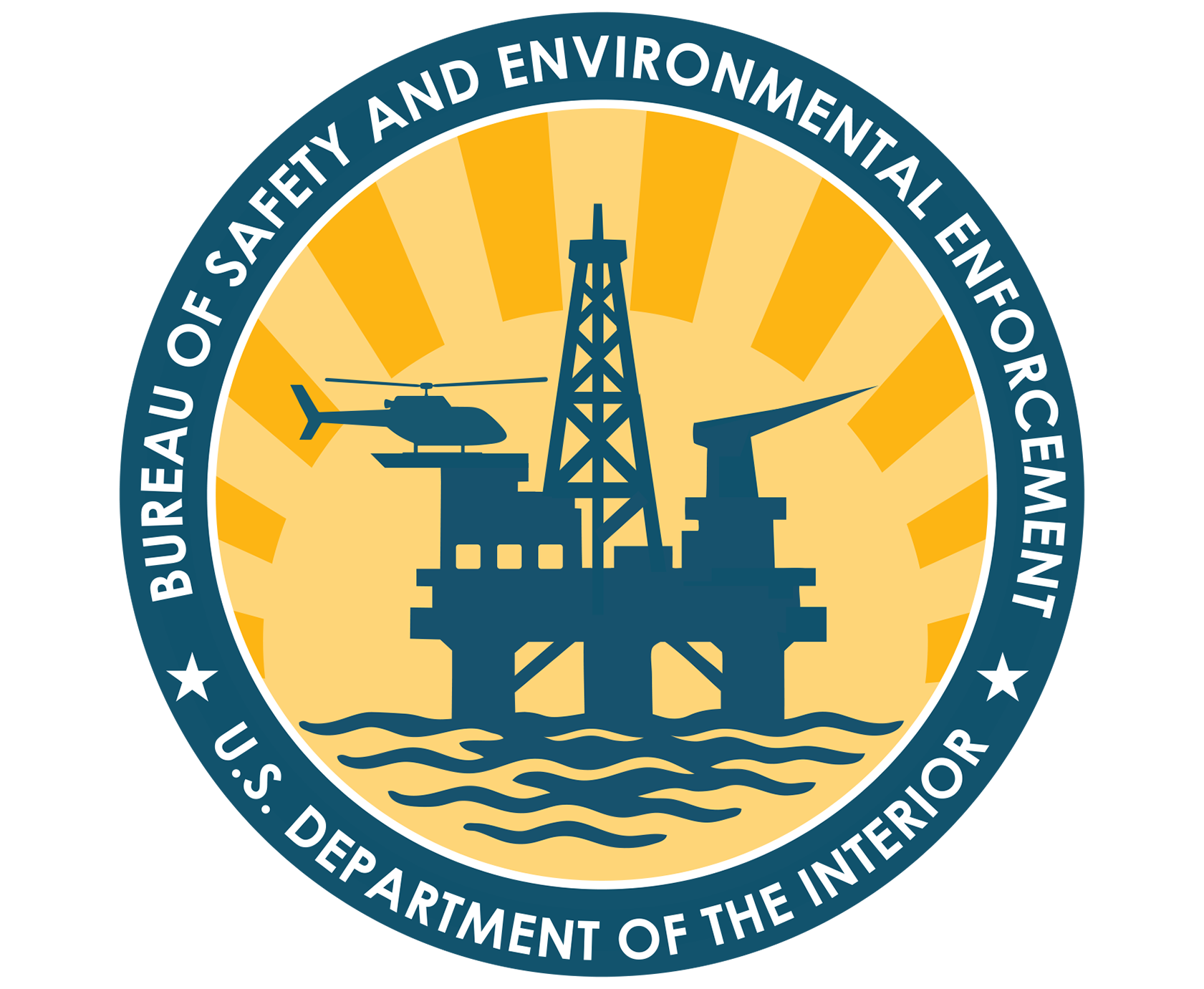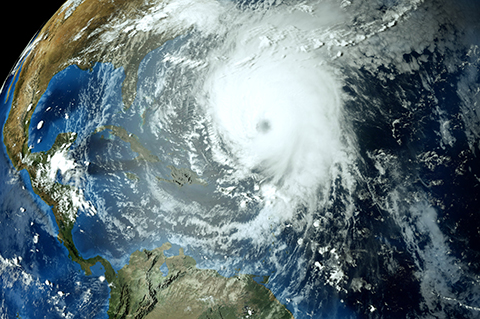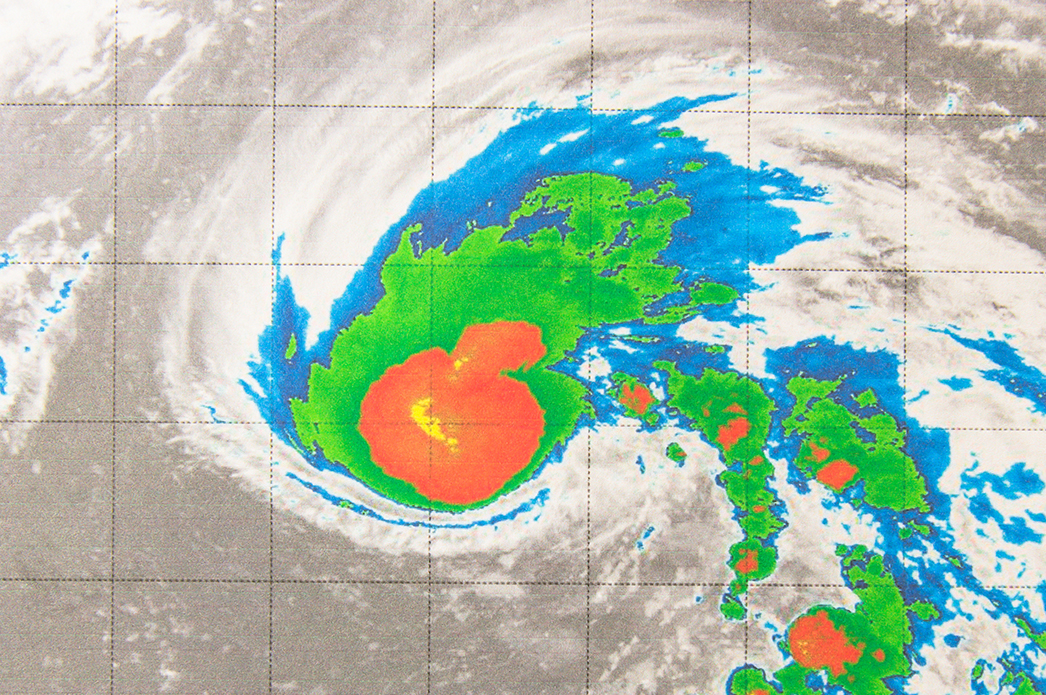BSEE sets forth regulations and guidance for the design and operation of oil and gas facilities to withstand the extreme conditions of severe weather and hurricanes and protect the men and women who work offshore and the environment. These preventative measures also are designed to minimize disruption of oil and gas production in the wake of a storm.
For more information related to the Hurricane Activity Statistics Updates, contact the BSEE Gulf of America Region Public Affairs Office at (504) 736-2595.
Hurricane Regulations
BSEE's regulatory oversight of offshore oil and gas operators and activities include both preparations for hurricanes, tropical storms, and severe weather, and reporting requirements if such weather events move through an area of the Outer Continental Shelf. Current requirements (Code of Federal Regulations, CFR) and guidelines (Notices to Lessees, NTL) can be found at the links below. Please note the addition of supporting documentation containing Updated Contacts for Hurricane-related NTLs.
- 30 CFR 250.192: Reports and Statistics Submissions related to Hurricane
- 30 CFR 250.417: Use of a Mobile Offshore Unit (MODU)
- 30 CFR 250.715: MODU GPS System Requirements
- 30 CFR 250.720: Well securing requirements
- 250.720 (a)(1)(v): Impending National Weather Service-named tropical storm or hurricane.
- 30 CFR 250.901: Industry Standards for Platforms
- 30 CFR 250.919: In-service Inspection Requirements
- Hurricane and Tropical Storm Effects Reports issued July 27, 2015: NTL 2015-G02. Updated Contacts for Hurricane-related NTLs
- Post-Hurricane Inspection and Reporting issued September 1, 2009: NTL 2009-G30. Updated Contacts for Hurricane-related NTLs
- Guidelines for Jack-up Drilling Rig Fitness Requirements for Hurricane Season issued June 1, 2009: NTL 2009-G10. Updated Contacts for Hurricane-related NTLs
- Guidelines for Tie-Downs on OCS Production Platforms for Upcoming Hurricane Seasons issued May 20, 2009: NTL 2009-G13. Updated Contacts for Hurricane-related NTLs
- Guidelines for Moored Drilling Rig Fitness Requirements for Hurricane Season issued June 1, 2008: NTL 2008-G09 Updated Contacts for Hurricane-related NTLs
- Design of New OCS Platforms and Related Structures for Hurricane Conditions issued December 15, 2007: NTL 2007-G26. Updated Contacts for Hurricane-related NTLs
- BSEE Form 132: Hurricane and Tropical Storm Evacuation and Production Curtailment Statistics Form
Frequently Asked Questions: BSEE’s Hurricane Roles and Responsibilities
A: The Bureau of Safety and Environmental Enforcement (BSEE) ensures offshore operators maintain strict hurricane preparedness, safety management, and emergency response standards. BSEE oversees regulatory compliance, facility preparedness, timely reporting, and post-storm assessments to minimize risks to personnel, operations, and the environment on the Outer Continental Shelf (OCS).
A: No, BSEE does not have authority to mandate evacuations. Operators are responsible for evacuation decisions in coordination with agencies such as the U.S. Coast Guard, which manages evacuations and emergency responses. BSEE’s role is to ensure operators have the necessary preparedness plans and safety measures in place.
Here are a few reasons why BSEE does not have evacuation authority:
1. Jurisdictional Limitations: BSEE is tasked with enforcing safety and environmental regulations on the Outer Continental Shelf (OCS), but its primary role is in regulatory oversight, rather than direct emergency management. Evacuation decisions involve dynamic, real-time assessment of weather conditions, safety risks, and personnel needs, which require coordination with other agencies that specialize in disaster response, such as the U.S. Coast Guard.
2. Operator Responsibility: According to federal regulations, it is the responsibility of the offshore operator to develop and implement emergency response plans, which include provisions for evacuating personnel if necessary. Operators are required to assess risks associated with hurricanes and take appropriate actions to protect their personnel. BSEE ensures operators have these plans in place but does not dictate the specific evacuation actions to be taken during a storm.
3. Role of the U.S. Coast Guard: The U.S. Coast Guard is the lead federal agency for coordinating evacuations during a hurricane or other emergency situations. The Coast Guard has the authority and expertise to issue evacuation orders, coordinate transportation, and manage the safe evacuation of offshore personnel. While BSEE may provide oversight, it is the Coast Guard that typically takes charge of the evacuation process in a hurricane scenario.
4. Risk Assessment and Response Flexibility: During a hurricane, the risk environment changes rapidly. Factors such as wind speed, storm surge, and facility vulnerability are continuously evaluated, and evacuation decisions must be made based on up-to-the-minute data. The operator, in conjunction with emergency responders, is best positioned to make these real-time decisions, rather than relying on BSEE to intervene directly.
In summary, while BSEE enforces regulations that ensure operators are prepared for hurricanes and other emergencies, the authority to order evacuations during such events rests with the operators themselves and agencies like the U.S. Coast Guard. BSEE's role is to ensure preparedness and compliance with safety regulations, but it does not directly manage emergency evacuations.
A: Operators must develop detailed preparedness plans, including structural assessments of facilities, evacuation procedures, securing of equipment, and comprehensive emergency response strategies. These plans ensure the safety of personnel and mitigate environmental impacts.
A: SEMS are required systems that operators use to manage safety and environmental risks. They help identify potential hazards, outline procedures for preventing incidents, and provide clear guidelines for managing operations safely during hurricanes and other emergencies.
A: BSEE enforces regulations that require regular inspections, maintenance, and assessments of offshore facilities. Facilities must meet stringent structural integrity standards designed to withstand hurricane-force conditions, reducing risks of environmental damage and operational disruptions.
A: Operators must report preparedness actions and submit documentation of inspections and emergency plans to BSEE before hurricane season. Post-storm, operators are required to report impacts, damages, and measures taken to address any issues.
A: BSEE coordinates closely with federal and state agencies like the U.S. Coast Guard and the Bureau of Ocean Energy Management (BOEM) for unified preparedness, response strategies, and recovery actions, ensuring a cohesive response to severe weather events.
A: NTLs provide operators with guidance and clarifications regarding regulatory compliance, particularly for hurricane preparedness. NTLs ensure operators have current information on necessary preparedness measures, equipment security, and response planning.
A: Yes, BSEE mandates regular emergency response drills simulating hurricane scenarios to ensure operator readiness, effective personnel response, and proper execution of emergency plans under real-world conditions.
A: BSEE conducts investigations and inspections after severe weather events. Operators failing to comply with preparedness and response regulations may face enforcement actions, including Notices of Violation, civil penalties, mandatory corrective measures, operational suspensions, or even legal action if negligence results in significant harm.
A: If operator non-compliance leads to damage or injuries, BSEE investigates and may issue violations, impose fines, mandate corrective actions, suspend operations, or escalate to legal proceedings. These actions hold operators accountable and ensure rigorous adherence to safety regulations.
A: Operators and stakeholders can access comprehensive guidelines, regulatory updates, Notices to Lessees, and detailed preparedness information directly through BSEE’s official website (www.bsee.gov).


